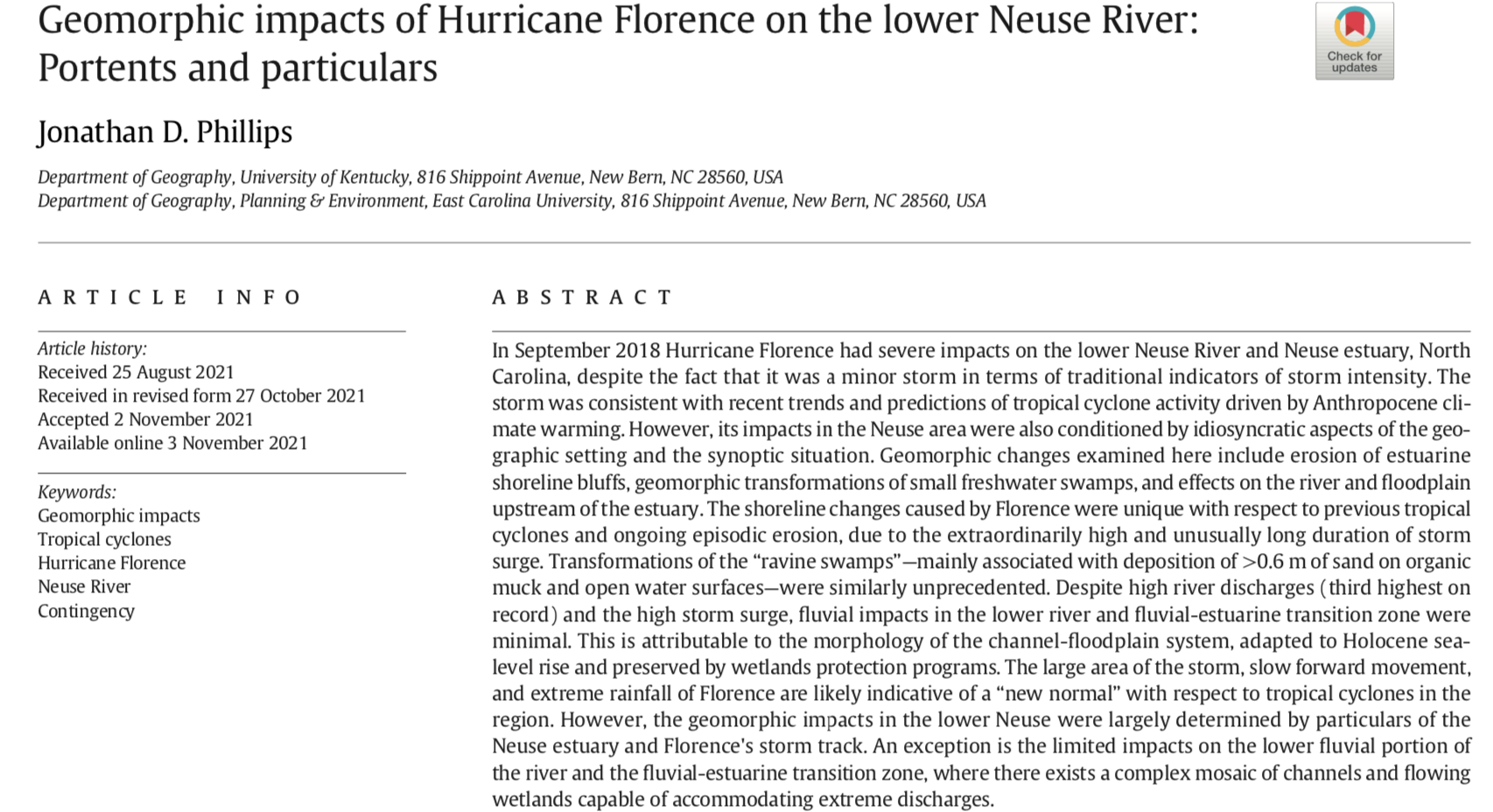Just published, in Geomorphology (2022, v. 397, 108026): Impacts of Hurricane Florence on the lower Neuse River: Portents and Particulars. Beyond documenting geomorphic impacts in three specific settings in, essentially, my current backyard, one of the main goals was to test the extent to which geomorphic impacts were attributable to the “new normal” nature of the storm, as opposed to tropical cyclones in general (portents); and to specific characteristics of both the lower Neuse region and the synoptics of Florence in the Carolinas (particulars). The “new normal” refers to the tendency here in the warmed-up and warming-up Anthropocene for more and larger tropical cyclones, and for these storms to hold and deliver more moisture, to move more slowly, and to expand in area (the whys of this are summarized in the article). As you can see from the abstract below, some aspects of Florence’s impacts are portents, while others are linked to the particulars of the place and the storm.

Another key takeaway from this work was that in the lower Neuse River fluvial-estuarine transition zone, there were minimal geomorphic impacts, though that stretch of the river corridor was battered by massive floods from upstream and record high storm surges from downstream. The reason? The corridor in this stretch is a complex of active channels, backflooded and high-flow channels, floodplain depressions, and wetlands that is pretty much perfectly suited to handle all that water, having evolved under the influence of Holocene sea-level rise. Wetlands protection programs have minimized disturbances in this area, thus maintaining its ability to absorb Florentine deluges.
I am doing some further research on the unique characteristics of the fluvial-estuarine transition zone (compared to the purely fluvial reaches upstream and the upper estuary downstream) and may publish something on that eventually (or may not, as my first attempt was pretty roughly treated by referees!).

A giant snake in the lower Neuse River! Actually, it's the floating roots of an aquatic arrowhead plant (genus Sagitarria).
The article is attached.
Posted 11 November 2021
